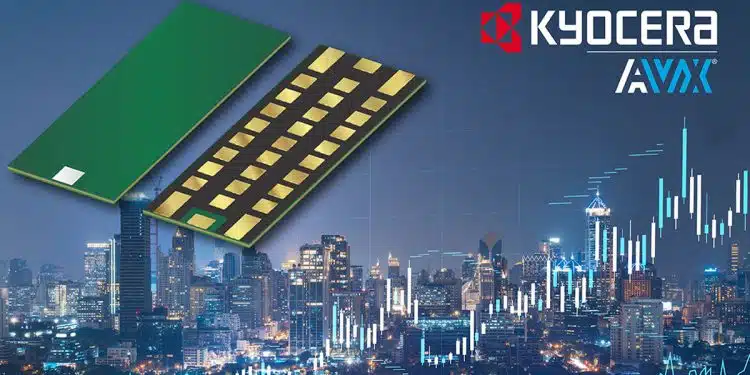KYOCERA AVX, a leading global manufacturer of advanced electronic components engineered to accelerate technological innovation and build a better future, offers three multilayer organic (MLO) filter series that are both designed and field proven to deliver best-in-class performance in a variety of RF applications.
The LP Series MLO low-pass, HF Series MLO high-pass, and BP Series MLO band-pass filters are low-profile passive devices based on KYOCERA AVX’s patented MLO high-density interconnect technology.
This technology has a high dielectric constant and high lot-to-lot repeatability and exhibits low material losses, which enables the development of high-Q passive printed elements, such as inductors and capacitors, in a multilayer stack.
It’s also impervious to the performance variations normally caused by temperature changes and expansion matched to most organic PCBs, which enables improved reliability compared to standard silicon and ceramic filters.
Thanks to this innovative material technology, KYOCERA AVX’s LP Series, HF Series, and BP Series MLO filters integrate inductors and capacitors into relatively small and low-profile land grid array surface-mount packages that reduce circuit complexity, conserve board space, and improve performance and reliability compared to filters comprised of discrete inductors and capacitors. All three series exhibit low parasitics and insertion loss, effective heat dissipation, very high rejection, and excellent solderability and are rated for 50Ω impedance, up to 12GHz (soon to be 20GHz), and operating temperatures extending from -55°C to +85°C.
They are available in RoHS compliant and lead-free compatible variants and in a variety of case sizes spanning 2616 to 5021 with maximum height profiles of 1.02mm and gold terminations. In addition, all MLO filters are 100% electrically tested, and none of them contain any substances of very high concern (SVHCs). Common applications for the three series include mobile communications, 5G, radar, signal processing, instrumentation, and test equipment.
In addition to these common characteristics, LP Series MLO Low-Pass filters and HF Series MLO High-Pass filters exhibit a wide frequency range and excellent isolation. They are currently available in eight case sizes (2616, 3116, 3416, 4016, 4617, 4614, 4218, and 5021) and are well-suited for use in GPS, vehicle location systems, wireless LANs, and satellite receivers.
- LP Series MLO filters are rated for 4W continuous power handling, frequencies spanning 71MHz to 7.09GHz, and less than 1.2dB insertion loss for passband frequencies extending from DC-f0.
- HF Series MLO filters are rated for 2W continuous power handling, passband frequencies extending from 740MHz to 8GHz, and a maximum of 1.20dB insertion loss.
BP Series MLO Band-Pass filters additionally exhibit steep roll-off and high rejection of out-of-band frequencies and are rated for 1 or 2W continuous power handling, frequencies spanning 770MHz to 4.68GHz, and less than 5dB insertion loss. They are currently available in six case sizes (2616, 3116, 3416, 4016, 4617, and 5021) and are also well-suited for use in military and EMS radios, UAVs, base stations, and wireless access points and terminals.
“We have continued to expand upon all three of our MLO filter series — LP, HF, and BP — since their respective market introductions in 2016, 2017, and 2018, and we are very proud of their field-proven best-in-class RF performance compared to standard silicon and ceramic filters,” said Mohammed Abu-Naim, RF Product Manager, KYOCERA AVX, “The unique material properties of our MLO filters allow us to integrate inductors and capacitors into relatively small and low-profile packages ideally suited for helping RF design engineers satisfy sustained market demand for smaller and more capable wireless electronics, and we recently shipped new stocking packages of all three expanded series to Mouser and Digi-Key. So, parts should be readily available for testing and design-in.”
All three series of MLO filters are available in waffle packs or on tape and reel in quantities of 250 or 1,000. KYOCERA AVX also offers custom MLO filters.
































